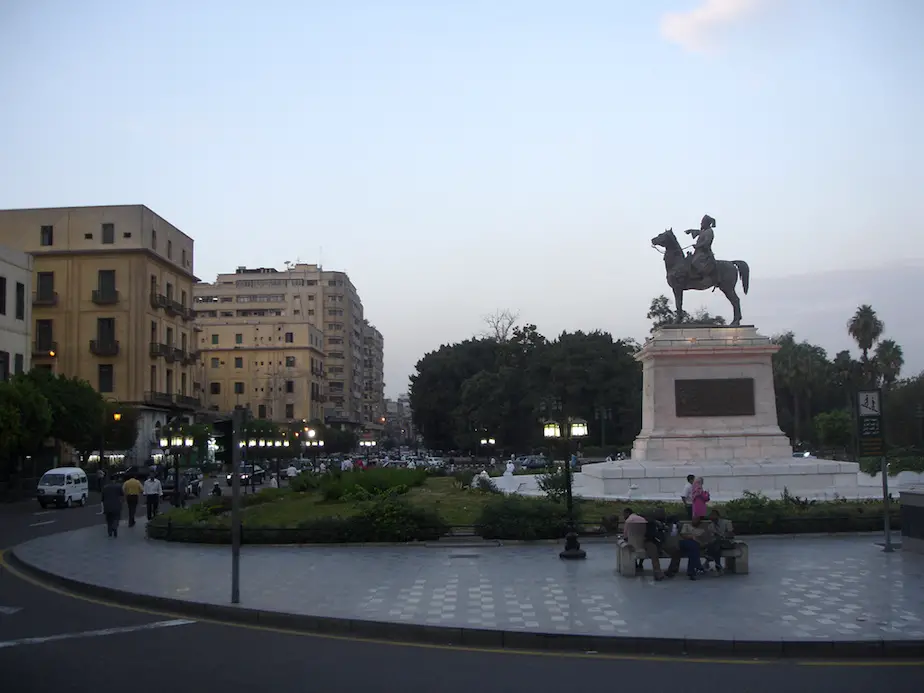The Baltimore Pop Star Impersonator with an Important Lesson in Public Space
Baltimore is a city that – sadly – seems to produce a lot of bad news. This time around, the news was particularly bad. On April 12, a young black man named Freddie Gray was take into police custody and died a week later of a severed spine due to an injury inflicted while riding in a police van. The community was outraged. In the wake of Gray’s death, many Baltimore residents took to the streets in protest. Sadly, some of these protests turned violent, destroying property in the community and distracting from the core issue of police brutality. As can be expected, these protests attracted heavy coverage in the news cycle at major outlets.
At first glance, it would seem that the most important lesson people involved with cities and urban issues can draw from these tragic events has to do with responsible policing. This is certainly true, but there’s more to it than that. And amidst the wall-to-wall coverage of the myriad community protests that emerged after Gray’s death, one story emerged that was an important lesson not in community policing but in public space.
Whereas nearly all of the protests were pretty typical, featuring signs, chants, and other common elements, one took an entirely different tack. On April 27, in the midst of a demonstration where tensions mounted between protesters and police, one man jumped out in between the two groups and launched into a convincing Michael Jackson dance impersonation. This unorthodox tactic was enough to de-escalate the tension and ensure that the protest avoided violence by both protesters and police officers.
This brief homage to the King of Pop brings home an important point. Context matters. If this gentleman had done his impression in his own home, or even in front of an audience who had come specifically to see him, the reaction would have been much different. Where we perform certain actions, and who we perform them in front of, is hugely important.
This fact has not been lost on urban planners, who are increasingly interested in the effects urban spaces have on people’s behaviors and interactions. Unfortunately, relatively little time has been spent asking what exactly those effects should be.
The way I see it, current thinking on public space can be divided into two main camps. The first sees the main function of public space as encouraging us to be more social, to get out there and enjoy the presence of other people having a good time. There are an increasing number of examples of this, from Jan Gehl’s reforms of the Strøget in Copenhagen to the partial conversion of Times Square in New York into a plaza. These efforts are often referred to as place-making, and are argued for both in terms of increased happiness in nearby citizens as well as increased economic activity.
The second argument holds that public space is essential for citizens to effectively exercise their democratic right to free speech and assembly. This idea first became popular thanks to French philosopher Henri Lefevbre’s idea of the “right to the city”, later promoted vociferously by the well known geographer David Harvey. By this logic, public space is a catalyst for average citizens to come forward with legitimate grievances against governments or powerful private interests, to advance the common good and prevent the abuse of power.
In reality, public space should aim to do both of those things. And it should also do more. Let’s look at the second of these two uses I just listed: the use of public space in the service of free speech. This sounds very nice in theory. But in practice, when people exercise their right to freedom of assembly, there is a high risk of conflict between either disagreeing groups or groups of protesters and police forces.
How should public space respond to this dilemma? I think that, yes, it should give people the right to the city. But giving people the right to the city can easily lead to conflict. Thus, it should be the goal of public space for these conflicts to be resolved nonviolently.
This is a critique that applies to both the “place-making” and the “right to the city” schools of thought. Whether a public space has been designed to have a good time or for people to speak their minds, there’s always a possibility for unhappiness, disagreement, and conflict. And responsible public space design ought to do what it can to resolve this as productively as possible. Not doing so will further the desire for the already rampant privatization of public urban spaces, making them worse places to live.
As goofy as it might appear on a surface level, the Michael Jackson episode on April 27 is a perfect example of how tense conflicts in public spaces can be diffused. And it didn’t even lead to a watering down of the protesters’ demands. In fact, they ended up getting at least part of what they wanted when Baltimore prosecutor Marilyn Mosby announced that she would press charges against the officers implicated in Freddie Gray’s death.
For urban planners, it may be difficult to envision physical design elements that encourage non-violent resolutions to the demands of protesters. But for city politicians it may actually point to policies that can be put into place. In fact, some cities already have. In Bogotá, the famous ex-mayor Antanas Mockus opted to fight the city’s out of control crime in the 1990s not just with police but also mimes, publicly distributed “red cards”, and “super citizen” costumes.
I don’t want to imply that the solution will be easy. Effective policing is important to every city. But so too is responsible policing that does not discriminate racially, or in terms of whether someone appears to be poor, or a “thug”. Though some in the urban planning community may disagree, I believe that the recent rash of police violence that has affected communities like Ferguson, Missouri, and continues in Baltimore, needs to be brought to an end, for the good of cities everywhere. Doing so by building trust between cops and communities, will make us safer while also creating a fairer society.
Pulling this off will mean a lot of difficult work directly with police departments. But that doesn’t mean that urban planners and policy makers can’t play a part. We are only now beginning to discover the potential of public space. This is one of the many ways it can be used. And all it took to remind us of this was a Michael Jackson impersonator.
Drew Reed is an online media producer and community activist specialising in sustainable transportation. He lives in Buenos Aires.
Photo: Bruce Emmerling


